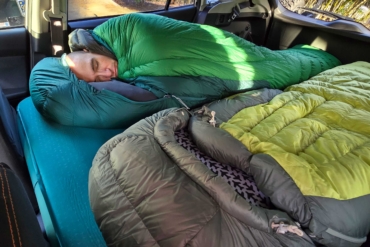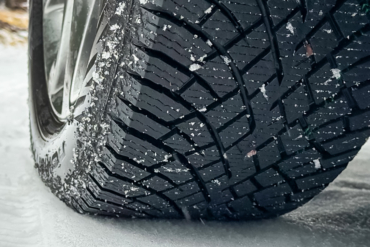Purchasing a winch for your 4WD to help with vehicle recoveries? Here are some considerations to keep in mind.
Several kinds of electric winches are sold in today’s market. From different rope types and winch capacities to wired, wireless, or even smartphone-enabled controllers, you’ll find that you have more than a few winch options to choose from.
Choosing the Right Winch for Your 4WD: Capacity

No matter what size your 4WD truck, SUV, or adventure vehicle, getting the right winch capacity is critical. To figure this out, an industry rule is to take the gross vehicle weight rating (GVWR) and multiply it by 1.5.
For instance, a 2022 Toyota Tacoma TRD Pro has a GVWR of 5,600 pounds; 5,600 multiplied by 1.5 equals 8,400. An appropriately sized winch capacity for this vehicle would be 9,000 pounds. This industry-suggested equation will get you your optimal minimum winch rating.

The GVWR can often be found on your vehicle’s door jamb or in the vehicle’s manual. Keep in mind, the GVWR is not what the vehicle weighs on a scale — it’s the total weight rating by the manufacturer of it fully loaded.
Be aware that purchasing the largest-capacity winch you can find is not recommended, as it could potentially damage your vehicle or another one during vehicle recovery. Yes, you can go up from your calculated minimum capacity.
For example, a 10,000-pound or even 12,000-pound winch would be okay for the Tacoma mentioned above. But installing a 20,000-pound unit might actually damage the vehicle, as the frame may not hold up to such pulling forces.
Wire Rope

There are benefits to both types of winch rope. Traditional wire rope gives users a durable and resilient winch cable that can be dragged over boulders or tree stumps with ease. When cared for properly, wire rope stays true to its ruggedness, offering years of continued service.
Wire rope, however, can develop burrs over time. (Make sure to use sturdy gloves when winching!) Wire rope can also rust if not maintained correctly. Additionally, wire rope stores a lot of potential energy under tension, which could be an issue in the event of rope failure.
Tip: If your winch uses a traditional hook, always “hook up” when rigging your winch rope to a hard or soft shackle (no matter whether your winch uses wire or synthetic rope). In the event the hook breaks, the winch rope will be forced down onto the ground versus up through the air.
Also, putting additional weight on the line such as a winch cable recovery damper or heavy jacket can help bring the line down if a hook or rope breaks.
Synthetic Rope

Synthetic rope, on the other hand, is lightweight, easy to handle, and stores less potential energy. You can also buy different synthetic rope colors to match your adventure 4WD or purchase a rope that features a woven reflective strand, like the Spydura Nightline rope from WARN Industries, in case you’re winching in poor light.
Although lightweight and easy to use, synthetic line needs extra attention. After slogging through mud or dusty trails, it will routinely need to be cleaned. If you neglect synthetic rope, dirt and road grime could degrade it from the inside out. Synthetic rope can also fray or shred when winching over rough obstacles like boulders or tree stumps.
Tip: If you plan to run synthetic line in your winch, make sure it has a protective abrasion sleeve. Some winch lines will include this protective sleeve, or you can purchase it separately. Synthetic rope abrasion sleeves (or sheaths) act as a buffer between the winch line and rough or jagged surfaces.
Simply pull the sleeve, or affix it (if removable), onto the winch line and place it at the point of potential abrasion. The sleeve will stay in place as the winch line moves freely within it — saving your synthetic line from damage.
Winch Designs

Before purchasing a winch for your vehicle, you must determine how you’ll attach it. There are a wide variety of front winch bumpers that allow top-mounted or recessed placement opportunities.
Additionally, some manufacturers have designed semi-hidden winch kits that retain part of the factory bumper for a semi-stock look. Others offer drop-in or universal winch plates that can be affixed to your 4WD vehicle.
Note: Research what type of bumper or winch mounting system will fit with your vehicle before purchasing it. Determine if you’re after a top-mounted setup where the winch is front and center, or if you’d like to hide it via a recessed winch system for a streamlined look. You may need to make some vehicle modifications, so read up before you drop your dough.
Roller vs. Hawse Fairleads
A fairlead is a metal guide that helps direct the rope onto the winch drum. Fairleads are typically provided as part of the winch kit when purchasing a winch.

Roller-style fairleads are used for wire rope.

A smooth, large-radius, hawse-style fairlead is generally used for synthetic rope, although a properly designed roller fairlead will work with synthetic as well. Hawse-style fairleads don’t have rollers but incorporate soft, rounded edges that won’t fray or damage synthetic rope.
Wired vs. Wireless Winch Controllers
There are two main types of winch controllers: wired and wireless. Wired controllers are tried and true and have been used for decades. They’re easy to plug into the winch’s control pack and simple to use.

However, their cords are usually only around 12 feet long. This generally gives users enough length to either stand behind an open door or sit within their vehicle for added protection during winch usage.

Wireless winch controllers, conversely, can offer an extensively longer range for winch control. Wireless controllers, like those from WARN Industries, communicate with their winches via radio frequency (RF) and can be used up to 100 feet away.
You can easily store the remote in a pocket when assessing vehicle recovery efforts, too. Even though wireless winch controllers are the latest craze, they can be limited. Batteries may go dead over time. Or you could lose the controller if you are not careful about where you stash it when not in use.

Additional smartphone options are also available on certain winches.
Research the Right Winch for Your 4WD Adventures
Electric winches come with different features at an array of price points. Electric winches for 4WDs can range from a few hundred dollars for basic, no-frill winches made in China to a few thousand dollars for premium winches boasting top-notch internals and the latest technology, some made in the U.S.
Niceties like an IP68 waterproof rating (IP68-rated winches can operate 1.5 m underwater for up to 30 minutes), wireless control, fast line speeds, or even length of warranty and serviceability opportunities can factor into a user’s purchasing opinion.

If you’re buying an electric winch for your 4WD adventure rig, make sure you purchase the best winch you can afford. The “buy once, cry once” ethos is a good one when buying this piece of recovery equipment for your vehicle.
Also, be sure you know how to use your winch before getting out there. Buying a quality winch (and knowing how to use it) could make the difference between telling happy trail tales to your buddies around the campfire — and being stuck out on the trail overnight and/or needing a lot of possibly very expensive assistance.








